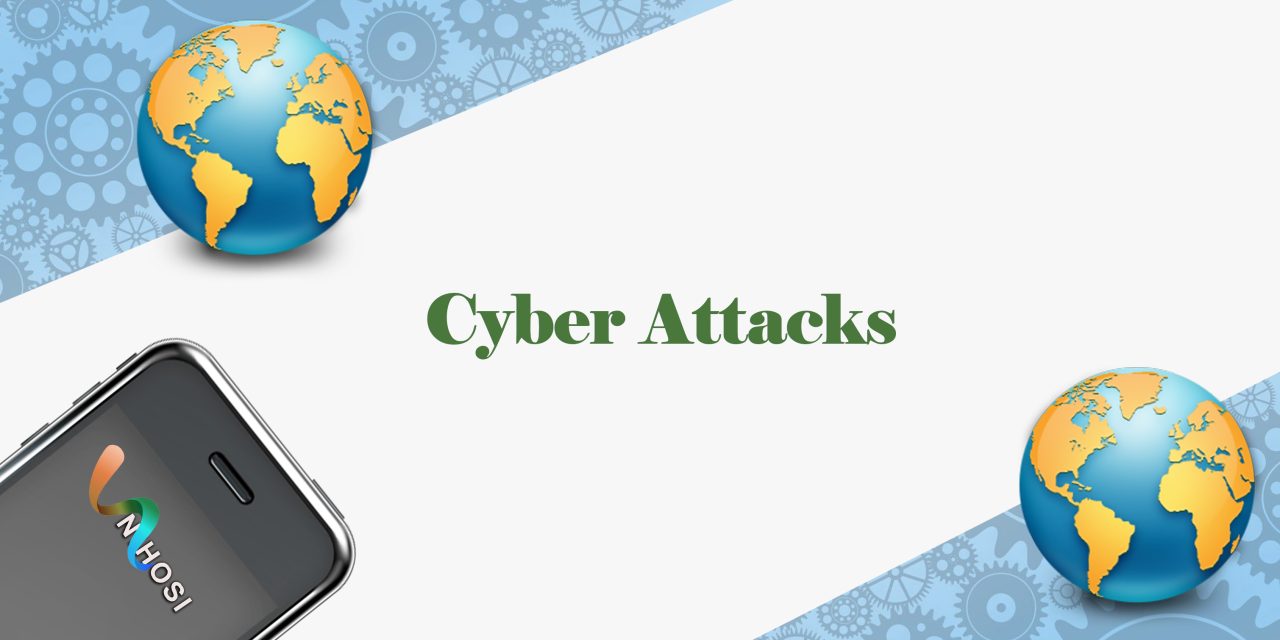In an era where we’re more interconnected than ever, the escalating advancement of technology isn’t just about convenience and opportunities. It’s also about the increasing vulnerabilities we’re exposed to. With a world thriving on digital connections, the risk of cyber threats looms larger than ever. Cyber attacks have grown in both number and sophistication, threatening our personal and professional lives.
Imagine our digital world as an ocean, vast and deep. In this ocean, your digital presence is like a ship, navigating through the waves of data and the storm of information. Cyber attacks can be seen as pirates, waiting to infiltrate your ship, rob you of your valuable data, or even hijack your systems. Just as the ship needs shields and tactics to ward off pirates, we need robust strategies to protect ourselves from cyber-attacks.
In this comprehensive guide, we’ll delve into the complexities of the cyber threat landscape. We’ll explore the various types of cyber threats and discuss practical and effective strategies to protect yourself. From understanding the role of regular updates and mastering the art of password management to safe online shopping, this guide will serve as your compass in the vast digital ocean. So, are you ready to fortify your ship against the cyber pirates? Let’s embark on this journey to unearth the keys to digital protection.
1. Understand the Cyber Threat Landscape
In the battle against cyber attacks, knowledge is your greatest weapon. Understanding the landscape of cyber threats helps you identify potential dangers, making you less vulnerable to attacks. Think of it like studying a map before embarking on a journey. The better you understand the terrain, the better prepared you’ll be for the journey ahead. Here, the terrain is the digital world, and the journey is your day-to-day online interactions.
1.1. Malware Attacks
Malware is a collective term that encompasses various types of harmful software designed to damage or infiltrate a system without the owner’s consent. They can take many forms, including viruses, worms, trojans, ransomware, and spyware.
Viruses attach themselves to clean files and infect other clean files. They can spread uncontrollably, damaging a system’s core functionality and deleting or corrupting files.
Worms infect entire networks of devices, either locally or across the internet, by using network interfaces. They use each consecutively infected machine to infect others.
Trojans disguise themselves as legitimate software or are included in legitimate software that has been tampered with. They act discreetly and create backdoors in your security to let other malware in.
Ransomware locks away your files and data, with the threat of erasing it unless a ransom is paid.
Spyware is designed to spy on you. It hides in the background and takes note of what you’re doing online, including your personal information, to send data back to the cybercriminal.
1.2. Phishing Attacks
Phishing is a method used by hackers to gather personal information using deceptive e-mails and websites. Here’s how it works. Imagine receiving an email that appears to come from a reputable source like your bank or the service you use. The email might ask you to confirm personal account information. But the email is not from the actual bank; it’s from a cybercriminal. If you respond with your information, it gives them the data they need to infiltrate your accounts.
Knowing how these attacks are orchestrated, their signs, and how to handle such situations is critical. This understanding equips you with the ability to navigate your digital world safely.
1.3. Man-In-The-Middle (MitM) Attacks
Man-in-the-middle attacks occur when hackers intercept the communication between two individuals to steal data. For instance, on an unsecured public Wi-Fi network, an attacker can intercept the data being transferred from your device to the network. These attacks show the importance of ensuring your internet connection is secure and encrypted.
1.4. Denial-of-Service (DoS) and Distributed Denial-of-Service (DDoS) Attacks
These attacks are designed to overwhelm systems, networks, or servers with traffic, leading to a denial of service for users. DoS attacks generally come from a single source, while DDoS attacks come from multiple sources, which makes them harder to stop.
By understanding these common threats, you can better prepare and protect yourself in the digital space. This is just a glimpse of the many cyber threats out there, but it gives you an idea of the tricks that cybercriminals have up their sleeves. Stay informed, stay updated, and stay secure.
2. Update Regularly: Your First Line of Defence
When it comes to protecting yourself from cyber attacks, keeping your systems, applications, and devices up-to-date is your first line of defence. Regular updates are crucial in cyber protection because they often include patches for newly discovered security vulnerabilities. Ignoring these updates is like leaving your doors unlocked, inviting unwanted intruders.
2.1. System Updates
Regardless of whether you’re using Windows, macOS, or Linux, each system continuously rolls out updates that improve the security and performance of your system. By updating your system regularly, you can make sure you’re not vulnerable to exploits targeted at older versions of the operating system.
2.2. Software/Application Updates
Similarly, software or application updates often contain security enhancements that protect against known threats. They also sometimes introduce new features or improvements to existing features. Not updating your apps can leave you susceptible to attacks that exploit older versions of the software.
2.3. Device Updates
Like your system and software, your devices such as smartphones, tablets, smart home devices, etc., also need regular updates. Manufacturers regularly issue updates to their device firmware to fix security loopholes and improve functionality. Failing to update these devices leaves them open to potential attacks.
2.4. Anti-Virus and Anti-Malware Updates
Your anti-virus and anti-malware software also need regular updates. These updates include the latest definitions for new viruses, malware, and other threats, improving the software’s ability to detect and eliminate these threats.
Remember, updating your systems, software, and devices is like maintaining a strong wall around your digital city. It might not keep out every possible invader, but it’s a critical first step to ensuring your online safety.
3. Master the Art of Password Management
Passwords serve as the first line of defence in protecting your online accounts from cyber threats. Mastering the art of password management is a critical step towards ensuring your cyber security.
3.1. Creating Strong Passwords
When creating a password, avoid using easily guessable information such as your birthday, the word ‘password’, or sequential numbers. A strong password should include a combination of upper and lower-case letters, numbers, and special characters. Longer passwords, typically around 12 characters, are also harder for attackers to crack.
3.2. Using a Different Password for Each Account
Using the same password for multiple accounts is like using one key to unlock every door you own; if a burglar gets their hands on it, they have access to everything. Ensure you have a unique password for each account to prevent a breach on one account from affecting your other accounts.
3.3. Leveraging Password Managers
Remembering a unique, strong password for each account can be challenging. That’s where password managers come in. They securely store all your passwords and auto-fill them on sites, eliminating the need for you to remember each one. They can also generate strong passwords for you.
3.4. Enabling Two-Factor Authentication
Two-factor authentication (2FA) adds an extra layer of security to your accounts. Even if an attacker cracks your password, they won’t be able to access your account without the second factor, which is often a code sent to your phone or biometric data like a fingerprint.
By mastering password management, you can greatly reduce the risk of falling victim to cyber attacks. Always remember, the key to your online security lies in your password management strategy.
4. Two-Step Verification: Double the Protection
In the evolving digital world, having just one layer of security, like a password, may not be sufficient. Enter two-step verification – an additional layer of security that doubles the protection for your online accounts.
4.1. What is Two-Step Verification?
Two-step verification, also known as two-factor authentication or 2FA, adds a second level of authentication to an account log-in. When you have to enter only your username and one password, that’s considered a single-factor authentication. 2FA requires the user to have two out of three types of credentials before being able to access an account.
4.2. The Three Types of Credentials
These credentials are typically something you know (like a password), something you have (like your phone), and something you are (like your fingerprint). Your credentials must come from two different categories to enhance security. This way, even if an attacker has your password, they will still need another credential to access your account.
4.3. How Two-Step Verification Enhances Security
Two-step verification adds an additional layer of security because even if an attacker manages to learn your password, they would still need the second verification step, which could be a text message sent to your phone, a biometric feature like your fingerprint, or a security key. This significantly reduces the chances of an account breach.
4.4. How to Set Up Two-Step Verification
The process of setting up two-step verification varies by platform, but it generally involves going to your account settings and choosing the 2FA option. You might be asked to provide a phone number or biometric data, or to download an authentication app, depending on the platform.
Two-step verification might seem like a minor inconvenience, but it provides a major boost in security. After all, in the world of cyber security, you can never be too careful.
5. Beware of Phishing: Don’t Take the Bait
In the realm of cyber threats, phishing stands as one of the most common and damaging forms of attack. Understanding and recognising phishing attempts is essential to staying safe online.
5.1. What is Phishing?
Phishing is a type of cyber attack where attackers impersonate legitimate organisations or individuals to trick victims into revealing sensitive information. This information can include usernames, passwords, credit card numbers, and more. The attack usually takes place via email, where the attacker tries to lure the victim into clicking a malicious link or attachment.
5.2. Recognising Phishing Attempts
Phishing emails often appear to come from a trusted source, like your bank or a popular website. They typically create a sense of urgency, encouraging you to act quickly to avoid negative consequences. Common signs of phishing emails include poor grammar and spelling, generic greetings, and unofficial email addresses.
5.3. Protecting Yourself from Phishing
To protect yourself from phishing attacks, never click on links or download attachments from suspicious emails. Double-check the sender’s email address and look for any inconsistencies. Always enter website URLs directly into your browser instead of clicking on links in emails.
5.4. Reporting Phishing
If you receive a phishing email, report it to your email provider and the organisation that the email pretends to be from. You can also report phishing attempts to your local authorities and through the Anti-Phishing Working Group at [email protected].
In a digital world filled with phishing attacks, staying vigilant is your best defence. Remember, if an email seems too good to be true or instils a sense of panic, it’s best to err on the side of caution.
6. Secure Your Home Network
Your home network is the gateway to your personal data. Ensuring its security is a crucial step in safeguarding yourself from cyber attacks.
6.1. Secure Your Wi-Fi Network
Start by setting a strong password for your Wi-Fi network – the stronger it is, the harder it is for hackers to crack. Don’t forget to change your network’s name (SSID) from the default to something unique, but avoid using personal information as it could be used against you.
6.2. Enable Network Encryption
Enable encryption on your Wi-Fi network to scramble communications over the network and make it harder for eavesdroppers to listen in. The most common encryption methods are WEP, WPA, and WPA2. Of these, WPA2 is the most secure.
6.3. Use a VPN
A Virtual Private Network (VPN) provides a secure connection to another network over the internet. It hides your IP address, making your online actions virtually untraceable. Consider using a VPN, especially when using public Wi-Fi networks, to maintain privacy and protect your data from potential attackers.
6.4. Keep Your Router Firmware Up to Date
Router manufacturers often release updates to improve their product’s performance or security. Make sure your router is running the latest firmware version to protect your network from known vulnerabilities.
Securing your home network might seem like a daunting task, but taking these steps can greatly reduce your risk of cyber attacks. Remember, the time you invest in securing your home network now could save you from a significant security breach in the future.
7. Embrace Firewalls
A firewall serves as a protective barrier between your device or network and potential threats on the internet. It’s a first line of defence in preventing unauthorised access to your system. Let’s explore how you can fully embrace and make use of firewalls for your protection.
7.1. What is a Firewall?
A firewall is a network security system that monitors and controls incoming and outgoing network traffic based on predetermined security rules. It establishes a barrier between a trusted internal network and untrusted external networks, such as the internet.
7.2. How Does a Firewall Work?
Firewalls work by inspecting data packets (small chunks of data) coming into and out of the network or device and blocking those that do not meet the security criteria. They help prevent intruders from accessing and manipulating your system or network.
7.3. Types of Firewalls
There are different types of firewalls including network firewalls (which protect a network of devices), host-based firewalls (which protect an individual device), and cloud firewalls (which are hosted in the cloud). Depending on your specific needs, you might need to use more than one type.
7.4. Enable Your Firewall
Most devices come with built-in firewalls, but they’re often disabled by default. Make sure your firewall is enabled to provide an additional layer of security. This can typically be done through your device’s security settings.
7.5. Regularly Update Your Firewall
Just like any other software, your firewall should be updated regularly to protect against new threats. Keep your firewall’s software or firmware updated to ensure it has the latest security patches and updates.
Firewalls, when properly utilised, can provide a robust shield against cyber threats. By understanding their importance and ensuring their effective use, you can significantly enhance your system or network’s security.
8. Regular Backups: Your Safety Net
Backing up your data regularly is akin to having a safety net in the digital world. It provides an essential recovery mechanism in case of data loss due to accidental deletion, hardware failure, or a cyber attack.
8.1. Importance of Regular Backups
Backups are copies of your work, your digital memories, and your important files, stored in a separate location from your computer. In the event of a cyber attack, such as ransomware, where your files can be encrypted and held hostage, having a recent backup could save you a lot of trouble and money.
8.2. Different Backup Methods
There are various ways you can back up your data. The two main types are local backups and cloud backups. Local backups involve copying your files to an external hard drive or other media, while cloud backups store your data on the internet, on servers provided by companies such as Google Drive, Dropbox, or Microsoft’s OneDrive.
8.3. The 3-2-1 Backup Rule
The 3-2-1 rule is a best practice for backup and recovery. It suggests having at least three total copies of your data, two of which are local but on different media, and one backup offsite, such as in the cloud.
8.4. Regularly Test Your Backups
Backing up data is a crucial part of a robust cyber defence strategy, but it’s just as important to regularly test those backups. Make sure the data can be restored and is usable. That way, when you need to rely on your backup, you can be confident it will work.
In the realm of cyber security, regular backups provide peace of mind. They may not prevent cyber attacks, but they are the most effective way to mitigate the damage they cause. Remember, a hard drive can be replaced, but your unique data might not be recoverable.
9. Safe Online Shopping: Secure Your Transactions
Online shopping can be a quick, convenient way to purchase items, but it also presents opportunities for cybercriminals to steal personal and financial information. Here’s how you can secure your transactions and shop safely online.
9.1. Shop on Secure Websites Only
Make sure the website you’re shopping on uses encryption to protect your information. Look for “https://” at the beginning of the website URL. The “s” stands for secure, indicating that the site encrypts data sent between your browser and their server.
9.2. Use Credit Cards Instead of Debit Cards
If possible, use a credit card for online shopping. Credit cards have better protection against fraudulent charges, and the money is not automatically deducted from your account as it would be with a debit card.
9.3. Be Wary of Public Wi-Fi
Public Wi-Fi networks are often unsecured, making it easy for hackers to intercept your information. Avoid making purchases or accessing sensitive information when connected to public Wi-Fi.
9.4. Regularly Update Your Devices
Ensure your devices, especially the ones you use for online shopping, are updated with the latest security patches and software updates. These updates often fix security vulnerabilities that cybercriminals could exploit.
9.5. Enable Two-Factor Authentication (2FA)
Two-Factor Authentication (2FA) adds an extra layer of security to your online accounts. Even if someone manages to get your password, 2FA requires an additional verification step to access your account.
Secure online shopping doesn’t have to be a puzzle. By being vigilant, understanding potential threats, and taking proactive measures, you can greatly reduce the risk of falling victim to cyber-attacks during online transactions.
10. Stay Informed: Knowledge is Power
In the realm of cyber security, knowledge truly is power. Staying informed about the latest threats and security practices can significantly bolster your defences against cyber attacks.
10.1. Stay Updated with Cyber Security News
Follow trustworthy cyber security news sources, blogs, or newsletters to stay up-to-date on the latest threats and security updates. Regularly updating your understanding of the threat landscape can help you react swiftly to new types of attacks.
10.2. Attend Cyber Security Webinars and Workshops
Take advantage of webinars, workshops, and training sessions available online to broaden your knowledge and skills in cyber security. They can offer practical advice and demonstrate real-world scenarios, helping you understand the importance of different protective measures.
10.3. Understand and Follow Best Practices
Established cyber security best practices are there for a reason – they work. Understand and follow them in your digital activities. This includes practices like regularly updating software, not clicking on unknown links, and backing up data regularly.
10.4. Share Knowledge with Friends and Family
Cyber security is everyone’s responsibility. Share your knowledge with your friends and family, and help them understand the importance of secure online behaviours. Cyber security is not just about protecting yourself, it’s about contributing to a safer internet for everyone.
Remember, in the ever-evolving world of cyber threats, what you know can help protect you and your personal data. The more informed you are, the less likely you are to fall victim to a cyber attack.
11. Conclusion: Your Role in Cybersecurity
In conclusion, protecting yourself from cyber attacks requires a combination of understanding the threat landscape, implementing strong defence mechanisms, and adopting safe online practices. These steps, from keeping software up-to-date to enabling two-factor authentication and shopping securely online, can help safeguard your digital life.
However, it’s important to remember that cybersecurity isn’t a one-time task, but an ongoing process. As technology advances and cyber threats evolve, so too should your cyber hygiene practices. Stay informed about the latest threats, learn about new protection methods, and regularly revisit and update your security measures.
Cybersecurity isn’t just a technical issue; it’s a human one, too. The choices we make, the practices we follow, and the knowledge we share all play a crucial role in creating a safer digital world. Everyone has a part to play, and each step we take towards more secure online practices is a step towards greater digital security for all.
Remember, the safer you are online, the safer everyone is online. Let’s work together to make the digital world a more secure place for everyone.
12. Frequently Asked Questions (FAQs)
12.1. What is a cyber attack?
A cyber attack is any attempt to expose, alter, disable, destroy, steal or gain unauthorised access to, or make unauthorised use of, a computer system, infrastructure, application, or network.
12.2. How can I protect myself from cyber attacks?
You can protect yourself from cyber attacks by understanding the threat landscape, keeping your software updated, using strong, unique passwords, enabling two-factor authentication, securing your home network, and shopping securely online, among other practices.
12.3. What is two-factor authentication and why is it important?
Two-factor authentication (2FA) is a security process that requires users to provide two different types of identification to verify themselves. This adds an extra layer of security, making it more difficult for attackers to gain access to your accounts.
12.4. What does “stay informed” mean in the context of cyber security?
Staying informed means keeping up-to-date with the latest cyber threats and security practices. This could involve following trusted cyber security news sources, attending webinars and workshops, and understanding and implementing best practices.
12.5. Why is online shopping a cyber security concern?
Online shopping can be a cyber security concern because it often involves sharing personal and financial information over the internet. Cybercriminals may try to intercept this data during the transaction or trick consumers into providing this information on fraudulent websites.
13. More Information
While this article provides a comprehensive guide on how to protect yourself from cyber attacks, the world of cybersecurity is vast and continually evolving. Therefore, keeping yourself updated with the latest trends and news in cybersecurity is essential.
You can find more content on cybersecurity and other technology-related topics on our website. We regularly post articles, blogs, and updates on various aspects of technology, including detailed guides, latest trends, and expert insights.
Visit our Technology Section
For more information, tips, and updates on technology, visit our technology section.
14. Call to Action
Did you find this article helpful? Want to stay updated with the latest trends in technology? Click here to visit our technology section and explore a wide range of articles, blogs, and updates on various technology topics. Don’t forget to sign up for our newsletter to receive the latest posts directly in your inbox!











Subscribe To Our Newsletter
Join our mailing list to receive the latest news and updates from our team.
You have Successfully Subscribed!